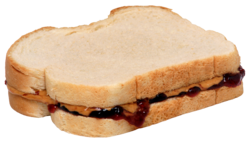Do you remember that one middle school project where you had a partner that had NO idea what they were talking about, and when the teacher asked them a question they began to desperately flounder about and gave an incorrect answer?
The news is this middle school partner.
There is no better example of the public’s misunderstanding of cubing than news segments about cubing.
These segments misrepresent cubing, perpetuating misinformation that enforces stereotypes and exponentially increases the barrier to entry for the hobby. How does it do this and what larger implications does this have?
I am writing this on 11/14/18 at 4:35 pm. Let’s search “Rubik’s cube” and see what comes up!
The third result is this: Meet the boy who can solve a Rubik’s cube in 12 seconds

SBS News
Alright let’s pick this to shreds!
“It was Christmas 2015 when James, a precocious kid from Brisbane, got his first two Rubik’s cubes – a 1.0 and a 12-sided Megaminx.”
This must be a typo, I have no idea what a “1.0” is. If they are attempted to say “10 and 12 sided megaminx” that is wildly inaccurate, a mega only has 12 sides.
“James… now has 23 Rubik’s Cubes – an impressive number for a seven-year-old.”
Ehhh… I suppose, but it’s very common to have a lot of puzzles. I’m currently at the border-line concerning number of 160 puzzles. When I first started I got past 30 in maybe 3/4 months.
“His current personal best for a traditional three-by-three cube stands at 12 seconds – not too far off the world record of 4.22 seconds”
This is laughable.
12 is great! In fact it’s very good for someone his age, but to say “not too far off” from 4.22. Oh man. In today’s level of competition .5 seconds can be considered a lot. If you ask someone with a personal best of 12 (like me!) if they are close to the world record holder Feliks, they’d laugh at you. Here are my results:
My PR (personal record), a term that means a competitor’s best solve in an official competition, is 12.84. Notice the ‘13,750’ next to it. That’s my solve’s rank. Not even top 10,000 in the world. I wouldn’t call that close to number 1. In fact, in an attempt to figure out the exact rank for a 12.00 second solve my webpage crashed loading all of the results.
Not only did this writer most likely round the number to a nice even 12 flat (a cardinal sin, we don’t round in official results), but they likely took James’ pb (best time at home). This time does not accurately reflect how fast he solves.
Notice the number next to single on my results, my average. My best average ever in competition was 16.91. It’s more accurate to say that I can solve a cube in 17 seconds.
That was an analysis only 4 paragraphs deep. So you get the idea, writers often don’t understand cubing and misrepresent it.
But I wouldn’t call it harmful to say that 23 puzzles is a lot or 12 seconds is close to the world record. What is harmful, however, is something that almost all cubing in the news does. It places cubers on an pedestal of intelligence.
Digging a little deeper we can see that the SBS article was just a promo for their child genius competition series. Unfortunately I’d have to sign up to watch it, but let’s just stick to what we know about James from the article.
Is James smart? Clearly, he is a genius by every definition of the word. Is James smart because he can solve a Rubik’s cube? NOOOOOOooooooooooooo.
News has an obsession with portraying cubers as geniuses, prodigies, and gifted individuals. This is not true, and a dangerous idea.
If people learn about cubing through the news they will never try to get involved. After all, who would even try to match the skill of a prodigy?
The sad truth is that there’s an ocean of misinformation pushed by journalists who don’t do their jobs and attempt to get clicks through clickbaited titles about geniuses.
There is a bright side. Sometimes in an ocean of garbage there can be a pearl. Just look in the comment section of Vox’s excellent video How a 15-year-old solved a Rubik’s Cube in 5.25 seconds. You will see many comments from cubers relieved that someone finally did their job as a journalist.
Until Vox decides to revisit the cube, we will have to deal with the garbage for now.





